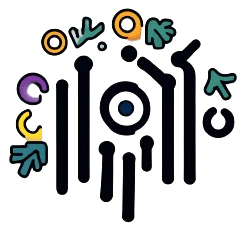| Definition | Architectural approach where multiple focal points are emphasized, each serving as a distinct but interconnected entity within the miniature environment. | Urban design principle that emphasizes a single dominant visual or structural element, often dictating the spatial hierarchy and orientation of the surrounding landscape. | Decentralized focal points promote a more egalitarian and accessible design by removing singular points of focus, thus allowing for greater diversity in user engagement and spatial navigation. |
| Philosophical Basis | Rooted in postmodern architectural thought, challenging the traditional, linear perspectives of spatial orientation. | Originates from modernist architectural ideologies, where hierarchy is viewed as necessary for spatial organization and functionality. | Decentralization enables the inclusion of diverse narratives and spatial experiences, breaking away from the “one-size-fits-all” ideology inherent in hierarchical hegemony. |
| Visual Perception | Encourages viewers to explore multiple pathways, generating unique, non-linear visual experiences. | Directs the viewer’s gaze towards a predetermined central element, restricting spatial perception to a controlled viewpoint. | Allows for an inclusive, multi-directional perception of space, enhancing the dynamic visual experience. |
| Spatial Distribution | Utilizes complex geometries and fractal patterns to create spatial zones that are interconnected yet independent in function and form. | Organizes space based on a central reference point, leading to a radial distribution of functionality and accessibility. | Supports the development of spatially diversified areas that cater to a broader demographic by providing varied scales and functionalities across the urban environment. |
| User Engagement | Encourages active exploration and participatory engagement by offering multiple points of interaction and varying visual stimuli. | Creates passive engagement as users are directed through predetermined routes and focal paths, reducing interaction with peripheral zones. | Facilitates higher levels of public interaction and involvement, fostering a sense of ownership and community among diverse user groups. |
| Inclusivity Potential | Highly inclusive as it accommodates diverse user needs, preferences, and interactions by providing multiple perspectives. | Low inclusivity as it enforces a top-down approach, limiting access to various spaces based on their proximity to the dominant focal point. | Supports equitable access and utilization of space, catering to marginalized groups by dissolving spatial hierarchies. |
| Scalability and Adaptability | Scalable through modular and fractal design approaches, allowing for seamless integration into diverse architectural scales. | Limited scalability due to its dependence on a singular focal element, making it rigid and challenging to adapt in varying contexts. | Offers a flexible framework adaptable to evolving spatial needs and urban developments, thereby supporting long-term sustainability. |
| Psychological Impact on Users | Provides a sense of discovery and autonomy, reducing anxiety by offering numerous options and paths for movement and engagement. | Can induce a sense of subordination and alienation, as the dominant visual element can overshadow smaller-scale community spaces and restrict movement patterns. | Enhances mental well-being by fostering a sense of freedom and agency within the built environment. |
| Ecological and Environmental Implications | Supports ecological diversity by accommodating varying micro-environments and promoting environmental integration through decentralized spatial planning. | Often disregards ecological considerations in favor of visually dominant structures, leading to environmental fragmentation and reduced ecological coherence. | Promotes environmental sustainability by allowing for integration of green spaces, biodiversity, and ecological corridors. |
| Sociocultural Impact | Encourages cultural representation and expression by allowing multiple focal points that symbolize diverse cultural narratives and identities. | Reinforces existing power dynamics and sociocultural hierarchies by symbolizing dominance and control through a singular focal element. | Enables a more democratic and inclusive representation of diverse cultural identities within urban spaces, fostering social cohesion and equity. |
| Technological Integration | Leverages advanced simulation and parametric design tools to create intricate, multi-scalar designs that respond to complex user and environmental inputs. | Relies on traditional CAD models with a focus on geometrical dominance, limiting the capability for responsive design adaptations. | Supports the integration of smart technologies and IoT-based monitoring to dynamically adjust and optimize spatial configurations based on real-time data, enhancing adaptability and resilience. |
| Case Studies | Examples include Zaha Hadid’s parametric urban spaces and UNStudio’s adaptive city projects, where multiple points of interest dynamically shift the user’s focus. | Examples include Le Corbusier’s Radiant City concept and the Monumental Axis in Brasília, where centralized focal points create clear visual and spatial hierarchies. | Case studies show that decentralized designs offer better adaptability to social changes and technological advancements compared to hierarchical models, providing valuable insights for future urban design paradigms. |
| Architectural Miniature Applications | Useful in prototyping complex urban environments with variable focal points for testing user experience and engagement models at a reduced scale. | Effective for visualizing spatial hierarchies in urban planning and infrastructure projects where dominance and control of space are primary objectives. | Decentralized focal points in miniatures enable more realistic simulations of user interaction and spatial behavior, offering more nuanced feedback for large-scale urban planning endeavors. |
| Urbanism Implications | Creates a framework for inclusive urban spaces where each area holds intrinsic value, reducing the marginalization of peripheral zones. | Promotes a monocentric model of urban development, often leading to spatial marginalization and socio-economic polarization. | Decentralized frameworks in urbanism can significantly enhance social inclusion and spatial equity by distributing value across all zones within an urban environment, rather than concentrating it at a central focal point. |
| Future Research Directions | Investigating the potential for AI-driven adaptive focal point generation in real-time, responsive to user density and flow patterns. | Exploring the role of hierarchical elements in reinforcing or challenging socio-political power dynamics within contemporary urban settings. | Further research could explore hybrid models that balance decentralized and hierarchical approaches, optimizing for both user engagement and efficient spatial organization. |
